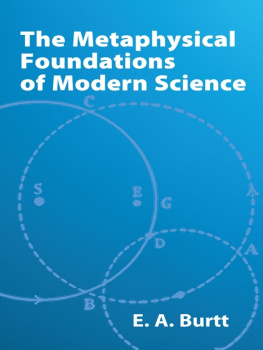






Arthur M. Young
The geometry
of meaning
This edition of The
Geometry of Meaning is
Volume III in the Anodos
Series of the collected
works of Arthur M. Young,
published by Anodos
Foundation. Except for
editorial and typographical
corrections, and updating of
front and back materials, this
fourth reprint is a facsimile
of the original volume
published by Delacorte Press
in 1976.
also by Arthur M. Young
The Reflexive Universe
The Bell Notes
Which Way Out?
Foundations of Science
Science and Astrology
Mathematics, Physics, and
Reality
Nested Time
Arthur M. Young
The geometry
of meaning
Anodos
Anodos Publications
Front cover art: frontispiece of Europe a Prophecy, an etching by William Blake, 1794. Courtesy of the Lessing J. Rosenwald Collection, Rare Book and Special Collections Division, Library of Congress.
Copyright 1976 by Arthur M. Young
All rights reserved. No part of this book may be reproduced, stored in a retrieval system, or transmitted, in any form or by any means, electronic, mechanical, photocopying, recording, or otherwise, without the prior written permission of the publisher, excepting brief quotes used in connection with reviews written especially for inclusion in a magazine or newspaper.
Printed and bound in the United States of America Designed by Jerry Tillett
Cover design by Rocki deLlamas
Fourth printing 2011
First publication, Kindle edition 2016
Anodos Foundation
Rural Route 1, Box 465
Cambria, CA 93428
Library of Congress Cataloguing in Publication Data Young, Arthur M. 1905-1995
The geometry of meaning.
Includes bibliographical references and index.
1. Knowledge, Theory of. 2. Meaning (Philosophy) 3. Whole and parts (Philosophy) I. Title.
BD161.Y68 121 76-918
ISBN-10: 1-892160-14-5
ISBN-13: 978-1-892160-14-0
The geometry of meaning
was orginally published by
Merloyd Lawrence
and also published by Robert Briggs Associates The publishers wish to thank Sheila La Farge
for extensive editorial assistance
in preparing this book for publication.
The author wishes to thank Sam Brooks for his interest and help in rewriting and simplifying the first nine chapters of this book,
and Chris Bird, Alice Morris, Chris Clark,
and Robert Temple for editorial suggestions.
Contents
Introduction
Chapter I | The fourfold division
Categories of knowing
The four aspects of a situation
Aristotles causes
Chapter II | The measure formulae
A mathematical method
The cycle of action
Use of the measure formulae
Categories of knowing represented by the measure formulae The scientific basis for the human faculties
The learning cycle
Chapter III | The threefold division Examples of the threefold
Chapter IV | Generating other measure formulae Formal device for reducing M, L, and T
Chapter V | The rosetta stone of meaning The four relationships
The four acts
The four states
Illustration from Peirce
Chapter VI | The roots of unity
Negative and imaginary numbers
Cube roots and the threefold operator
Chapter VII | Comparison of threefold and fourfold operators Example from psychology
Constraint and freedom
Order of the realms
Summary
A philosophical overview
Chapter VIII | Substance and form
The theory as it applies to nuclear particles
Form versus substance in science
The threefold operator and the nuclear realm
Chapter IX | Purposive intelligence and the twofold operator Introduction of the twofold operator
The twofold operator in nature
The emergence of life
The evolution of lifeincrease of freedom
Categories of life exemplifying the three degrees of freedom Chapter X | Applications
The fourfold operator
The threefold operator
The twofold operator
Chapter XI | The four elementsChapter XII | Free will
Summary with some emphasis on neglected points Chapter XIII | Types of philosophy Earth versus air
Water
Fire
Rsum
Instinct
Becoming
Where does it lead?
About the author
Index
Introduction
All meaning is an angle.
I dont know where I first encountered this enigmatic statement.
I do recall that its origin was said to be in ancient Egypt, and I draw great comfort from this confirmation that there was at one time, perhaps so long ago that it was not even registered by Greek thought, a tradition that reflected the same conclusions I have reached after a lifelong effort to formulate meanings without reverting to the circularity found, for example, in dictionary definitions.
I would like to call this book an essay in philosophy. However, I should point out that I do not mean philosophy as it is usually practiced today, but in the older sense of the science which investigates the facts and principles of reality. In this sense, philosophy not only encompasses the natural sciences, but explores the implications of the findings of science, and also deals with the relationship between the knower and the known.
Finding the abstruse mathematical formulations of science incomprehensible, modern philosophy falls back on the meaning of words. It therefore loses touch with the reality that gives science its strength and is the ultimate reference for the words upon which philosophy depends.
The ignominy of this retreat was recognized as early as 1905, when the American philosopher Charles Sanders Peirce berated metaphysicians for not pursuing truth more vigorously:
Its business [metaphysics] is to study the most general features of reality and real objects. But in its present condition it is, even more than the other branches of coenoscopy (the study of ordinary things) a puny, rickety, and scrofulous science. It is only too plain that those who pretend to cultivate it carry not the hearts of true men of science within their breasts. Instead of striving with might and main to find out what errors they might have fallen into, and exulting joyously at every such discovery, they are scared to look Truth in the face. They turn tail and flee her. Only a small number out of the great catalogue of problems which it is their business to solve have ever been taken up at all, and those few most feebly. Here let us set down almost at random a small specimen of the questions of metaphysics which press, not for hasty answers, but for industrious and solid investigation: Whether or not there be any real indefiniteness, or real possibility and impossibility?
Next page


















